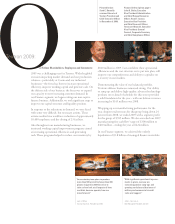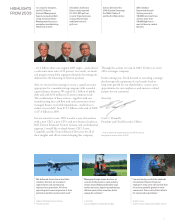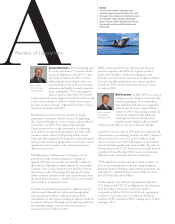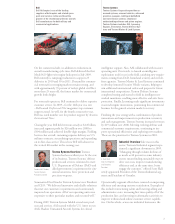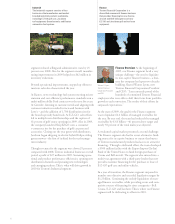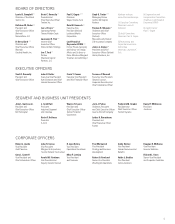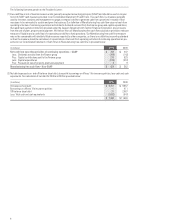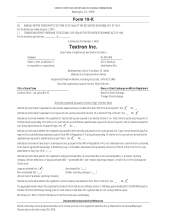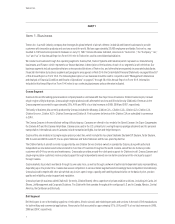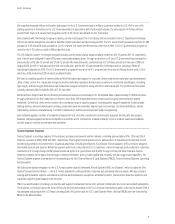E-Z-GO 2009 Annual Report Download - page 4
Download and view the complete annual report
Please find page 4 of the 2009 E-Z-GO annual report below. You can navigate through the pages in the report by either clicking on the pages listed below, or by using the keyword search tool below to find specific information within the annual report.
A
Cessna Overview If there is anything posi-
tive to be said about a 79 percent decline
in aircraft shipments across the U.S. gen-
eral aviation industry in 2009, it is this:
Addressing the hard realities of the year
is positioning Cessna to be an even more
innovative and highly focused competitor
in the marketplace. “De-escalating from
plans to produce more than 500 aircraft
to fewer than 300 planes shipped in 2009 forced us to take
a close look at all aspects of how we think, how we oper-
ate, how we move forward,” refl ected Jack Pelton, Cessna
Chairman, President and CEO.
Particularly in a down economy, aircraft servicing is
important to customers and the business. Recognizing
this, Cessna rethought its service business and introduced
ServiceDirect in 2009. This unique offering brings
Cessna aircraft service to the customer by coordinating
work done by an approved maintenance specialist at the
customer’s home airport; by deploying mobile service
trucks specially equipped with diagnostic and maintenance
tooling to the aircraft on the ground; or by fl ying a Cessna
maintenance crew member to the customer location to
deliver on-site service.
Rethinking how it enhances aircraft features, Cessna
joined forces with outside companies to expand its
upgrade offerings; new options now include winglets for
the Citation X and glass cockpit upgrades for many older
Citations. Also, Cessna adopted a new problem-solution
orientation to sales. This change has improved Cessna’s
ability to match customer needs and aircraft features from
the initial point of contact – whether it’s for a new aircraft,
used aircraft or on-demand service.
In terms of manufacturing operations, aligning capacity
with decreased demand not only meant managing the
repercussions of workforce reductions and facilities
consolidation, it also meant revisiting production methods
to improve effi ciency. Through actions such as production
line schedule changes, Cessna realized an inventory
reduction of $571 million in 2009.
Jack J. Pelton,
Cessna Chairman,
President and CEO
2
Review of Operations:
Cessna
Cessna is the world’s leading general
aviation company based on unit sales with
fi ve major lines of business: Citation business
jets, Caravan single-engine utility turbo-
props, Cessna single-engine piston aircraft,
aftermarket services and lift solutions by
CitationAir.
While Cessna closed the year with revenues down 41
percent compared with 2008, the segment posted a
profi t of $198 million. Production alignment with
demand, continued service innovation, heightened R&D
focus on core light and mid-size jets, and an uptick in
aircraft use: These are the forces that will move Cessna
forward in 2010.
Bell Overview For Bell, 2009 was a year of
strong execution. Despite a six-week strike
and the ramping up of several product
lines, Bell delivered 60 new or upgraded
military and 153 new commercial heli-
copters in 2009 while cutting overtime by
13 percent compared with 2008 and
reducing lead time on virtually every
product model. Additionally, every Bell
military aircraft delivery was on or ahead of schedule.
Largely this success is due to Bell employee teamwork and
commitment to streamlining processes. In 2009, employee
efforts produced a 12 percent, or $135 million, reduc-
tion in inventory over 2008. Bell employees also reduced
aircraft lead time signifi cantly; most notably, the order-to-
delivery time for the V-22 Osprey was cut in half, from 64
months to 29 months since 2008, based on operational
effi ciencies and commodity lead time reductions.
“With signifi cant operational improvements in place, we
now are executing product ramp-ups and growing our
balanced business of military and commercial aircraft sales
and support,” explained John Garrison, Bell’s new Presi-
dent and Chief Executive Offi cer.
On the military side, 2009 saw deployment of the fi rst
V-22 Ospreys and UH-1Ys in Afghanistan. Initial reports
from the military have been very positive. Bell is
contracted to deliver 28 V-22s in 2010 and is gearing up
to deliver 39 aircraft in 2012. In addition, Bell plans
to deliver 20 H-1 aircraft in 2010, working up to 26 H-1s
starting in 2012.
John L. Garrison Jr.,
Bell Helicopter
President and CEO


